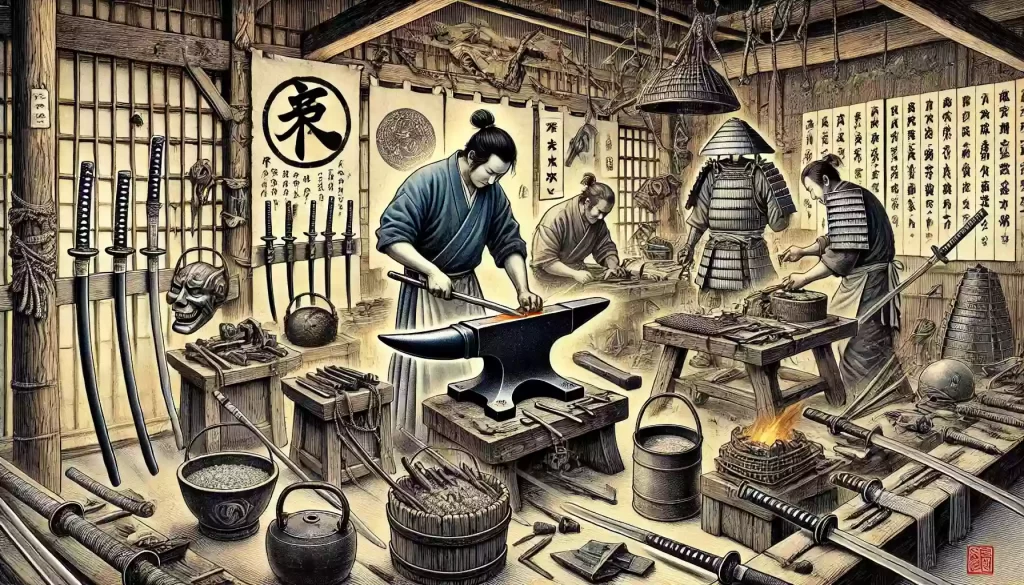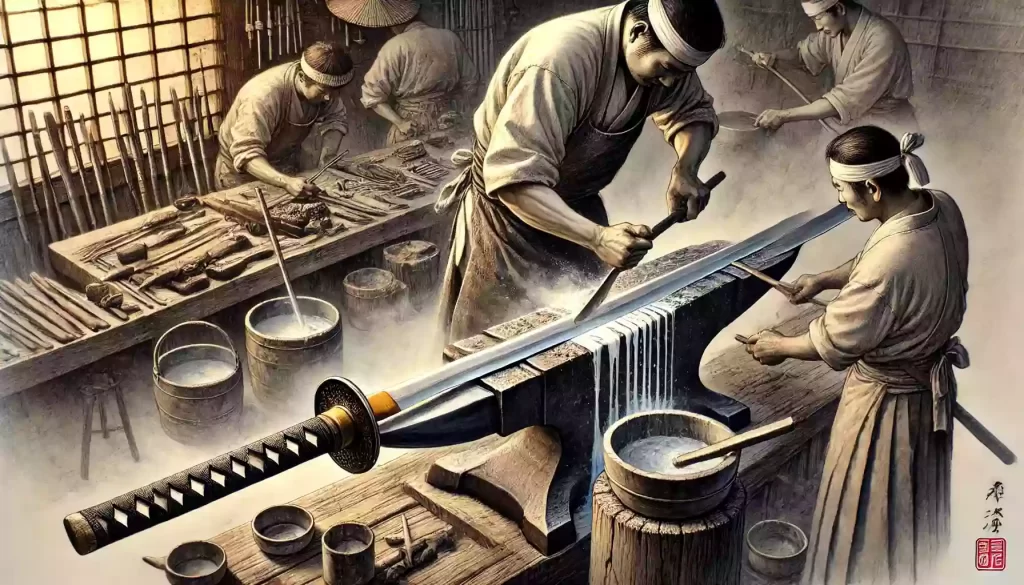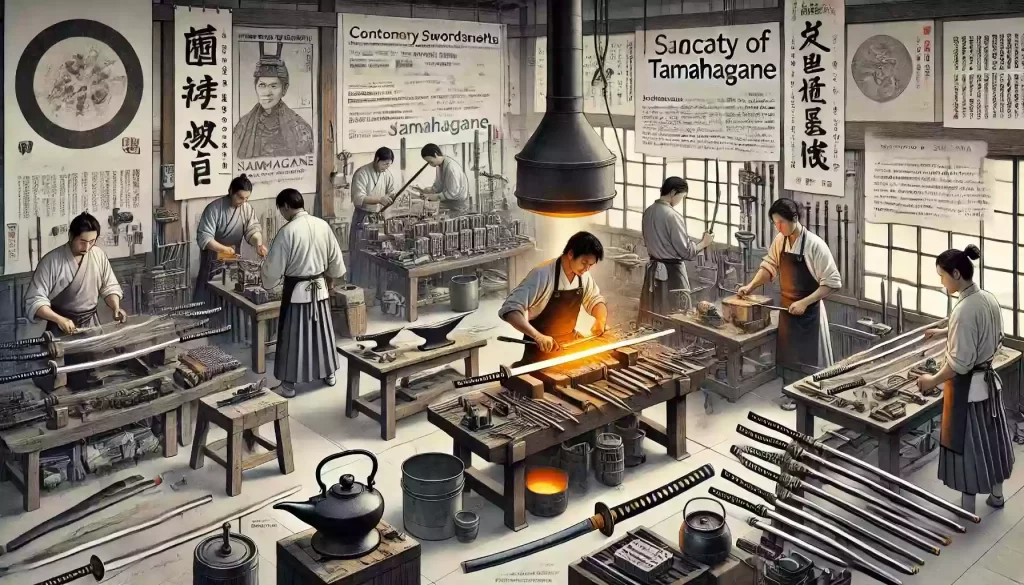The Japanese katana is more than just a weapon; it is a symbol of the samurai spirit and a masterpiece of craftsmanship. The process of hand-forging a katana is a meticulous art form that has been perfected over centuries. This blog will explore the history, process, and significance of hand-forged Japanese katanas, highlighting why they are revered as some of the finest blades in the world.

Ⅰ.History of the Japanese Katana
1.Origins and evolution:
The Handmade Katana, a type of traditional Japanese sword, dates back to the Kamakura period (1185-1333). Initially designed for the samurai class, the katana evolved from earlier sword designs to become a more efficient weapon for mounted warriors. Its curved, single-edged blade allowed for quick, powerful strikes.
2.Cultural significance:
Throughout Japanese history, the katana has been more than just a tool of war. It embodies the samurai’s honor, discipline, and skill. Samurai believed that their soul resided in their sword, and the katana became a symbol of their warrior ethos. The process of forging a katana was also considered a spiritual journey, with swordsmiths often following ritualistic practices.
Ⅱ.The Art of Hand-Forging a Katana
1.Selecting the steel:
The forging process begins with selecting high-quality steel, traditionally tamahagane, a type of steel produced from iron sand. Tamahagane is prized for its purity and unique properties, essential for creating a blade with the perfect balance of hardness and flexibility.
2.Forging the blade:
Smelting and Folding
The raw tamahagane is heated in a furnace and then repeatedly folded and hammered to remove impurities and create a uniform structure. This folding process can be repeated up to 16 times, resulting in thousands of layers. This not only purifies the steel but also gives the blade its distinctive grain pattern, known as hada.
Shaping and Quenching
Once the steel is sufficiently folded, it is hammered into the basic shape of the blade. The swordsmith then applies a clay mixture to the blade, with a thicker layer along the spine and a thinner layer along the edge. This differential clay coating helps control the cooling rate during quenching, creating a hard edge and a softer spine, a characteristic known as differential hardening. The blade is then heated and rapidly cooled in water or oil, a process called quenching, which locks in these properties.

3.Polishing and sharpening:
After quenching, the blade undergoes a meticulous polishing process, which can take weeks. Using a series of increasingly fine whetstones, the polisher reveals the blade’s sharp edge and intricate grain patterns. The final polish also enhances the blade’s curvature, known as sori, which is crucial for its cutting performance.
4.Fittings and assembly:
The katana is then fitted with a hilt (tsuka), guard (tsuba), and scabbard (saya). These components are often elaborately decorated, reflecting the samurai’s status and personal aesthetics. The hilt is wrapped in ray skin and silk, providing a secure grip, while the tsuba protects the hand and balances the blade.
Ⅲ.The Significance of Hand-Forged Katanas
1.Superior craftsmanship:
Hand-forged katanas are renowned for their exceptional craftsmanship. Each blade is a unique work of art, reflecting the skill and dedication of the swordsmith. The traditional techniques used in their creation ensure that hand-forged katanas possess superior balance, sharpness, and resilience compared to mass-produced counterparts.
2.Cultural and spiritual value:
The process of creating a katana is deeply rooted in Japanese culture and spirituality. Swordsmiths often regard their work as a spiritual practice, imbuing each blade with a sense of purpose and reverence. Owning a hand-forged katana is not only a testament to the owner’s appreciation for fine craftsmanship but also a connection to the rich heritage of the samurai.
3.Collectible and functional:
Hand-forged katanas are highly sought after by collectors and martial artists alike. Collectors value them for their historical significance and artistic merit, while martial artists appreciate their functionality and performance. A well-crafted katana can serve both as a formidable weapon and a stunning piece of art.
Ⅳ.Modern-Day Swordsmiths
1.Continuing the tradition:
Despite the decline of the samurai era, the tradition of hand-forging katanas continues in Japan. Modern-day swordsmiths, often recognized as Living National Treasures, uphold the ancient techniques passed down through generations. These artisans dedicate their lives to preserving the art of katana making, ensuring that this cultural heritage endures.
2.Innovations and challenges:
While traditional methods remain central, contemporary swordsmiths also explore innovations in materials and techniques. However, they face challenges such as the scarcity of tamahagane and the rigorous regulations governing sword production in Japan. Despite these obstacles, the passion and commitment of these artisans keep the legacy of the hand-forged katana alive.

Final Thoughts
The hand-forged Japanese katana is a symbol of unparalleled craftsmanship and cultural heritage. From its historical origins to the intricate process of forging, each katana is a testament to the skill and dedication of the swordsmith. In a world where mass production often overshadows traditional methods, the hand-forged katana remains a revered artifact, embodying the spirit of the samurai and the art of Japanese sword-making. Owning a hand-forged katana is not just about possessing a weapon; it is about appreciating a piece of history and a masterpiece of human ingenuity.